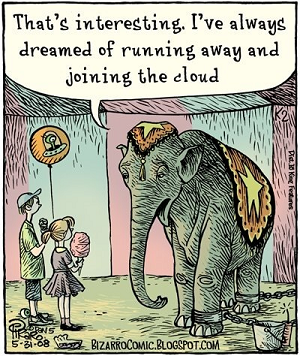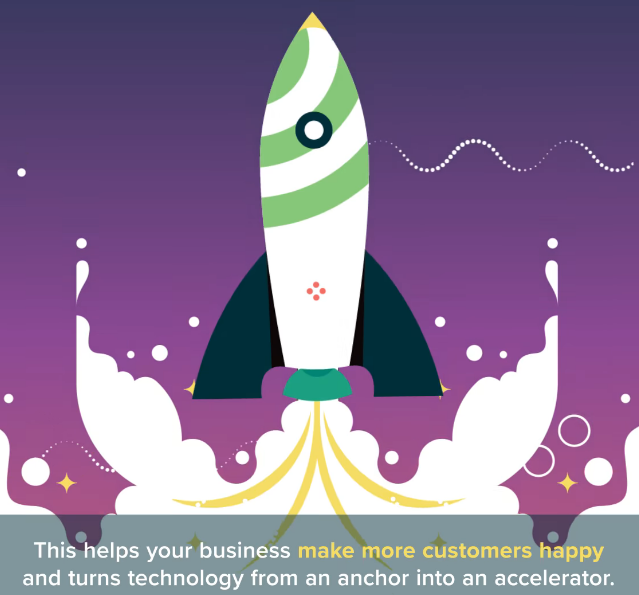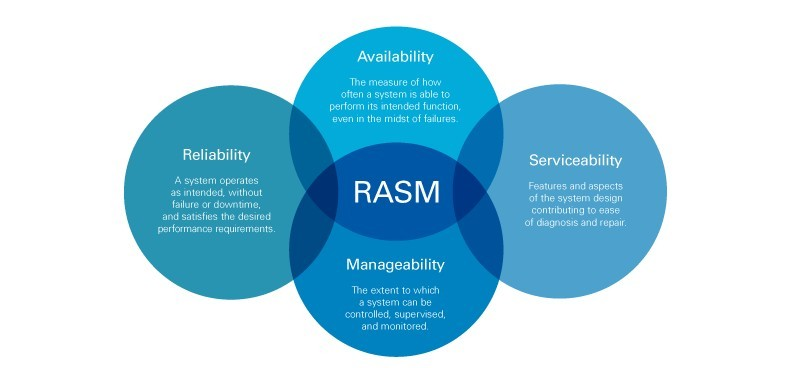Mainframe to the Cloud, the Right Way (Avoiding Gilded Cages)
September 1st, 2020
The Elephant In The Room
After decades of evolution within a constrained ecosystem, mainframe applications are prodigiously complex & inflexible. And it’s not just the code … it’s the data, it’s the operational processes, it’s the security rules, it’s all the interfaces … in many variations and multiple combinations. Until recently, when cloud strategies were fervently discussed inside the rooms of Financial Services companies, Government departments, and elsewhere, the mainframe was the elephant in the room. Today, the progressive CIO has embraced the cloud and has sat the elephant at the table. So, what is the right approach that delivers the most value?

Reengineering?
Nope.
Look, I get the appeal. The idea that you can analyze a complex monolith to accurately extract business rules into an abstract model from which you can generate a brand-new shiny application with zero technical debt, is compelling. Having just written that sentence, I’m excited!
The problem is it just doesn’t work out that way. You will spend years paying your Systems Integrator to manually remediate low-fidelity generated code and write extensive test frameworks just to make it function as before. Then, if you survive, you are left with an entirely new application architecture that was imposed on you by your weapon of choice (MVC, anyone?) and a bunch of bespoke code written by a team who doesn’t even work for you. Guess what? That is technical debt — not only is it a prescriptive model rather than one aligned with your end-state, but it is also one that is less well understood than what you started with.
Let’s call it what it is:
Reengineering is a low-fidelity tools-based approach to rewriting an application that forces you to adopt an end-state that is not cloud-native and one in which you had no say in determining.

Rehosting/Emulation?
Nope.
I’ve been there, done that (prior company). More commonly known as “Lift & Shift”. With this approach, you are basically swapping the hardware. That’s it.
At the application layer, you are still dependent upon a vendor’s proprietary application server (just like you were before). You are still locked-in to the host language (predominantly COBOL, or perhaps PL/I or Natural — just like you were before). You are still entrenched in a scale-up application architecture that was first delivered by IBM in 1964 (just like you were before).
Let’s call it what it is:
Rehosting is an emulation-based approach that delivers no strategic value, locks you in to your technical debt, and forces you to adopt an end-state that is not cloud-native.

Replatforming?
Yep.
If you click on the rocket image to the right, you’ll see a 30-second video from Pivotal that does a great job explaining what replatforming is. This approach is also described as “automatic refactoring” by some.
At the core is a compiler that quickly and accurately recompiles online & batch mainframe applications (written in COBOL, PL/I, Natural) into 100% Java. Literally, compiling millions of lines-of-code in minutes, with guaranteed accuracy (just as you would expect from any compiler).
Refactored applications execute under any industry-standard Java Application Server (e.g. Apache Tomcat, Eclipse Jetty, Wildfly).
If you’re targeting the cloud and not deploying to a Java Application Server, you need to rethink your approach!

Executing under a Java Application Server means your application can be quickly & seamlessly integrated into your cloud-native platform of choice (including serverless environments). Which means it will scale horizontally on-demand, with high-availability (across multiple regions & zones), and with serviceability via centralized management & monitoring. Cloud-native Java applications deliver RAS(M).
Let’s call it what it is:
Replatforming is a fast & accurate compiler-based approach that delivers strategic value through creation of modern agile applications using an open industry-standard deployment model that is cloud-native.
Summary
Let’s say you’re attempting to make a road trip from Chicago to New York:
Reengineering will take you through the scenic route. You’ll never find a multi-lane roadway, and it’s likely you’ll visit all 50 states (yes, including Hawaii). When you arrive in Washington DC your vendor will tell you it’s been the trip of a lifetime.
Rehosting will put you on a highway/motorway but in the wrong direction, and you’ll end up in Milwaukee (the closest major city to Chicago). Your vendor will tell you that Milwaukee is the new New York.
Replatforming puts you on the fastest most-accurate route to New York. Once there, your vendor will ask you, where next? Large-scale cloud deployment? Smart-device integration? Breaking the monolith (into microservices)?

